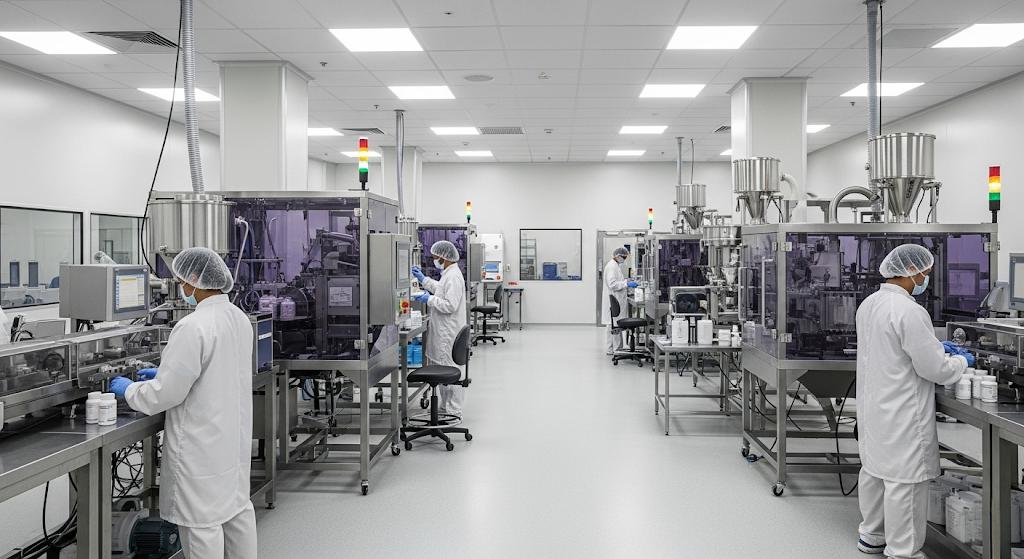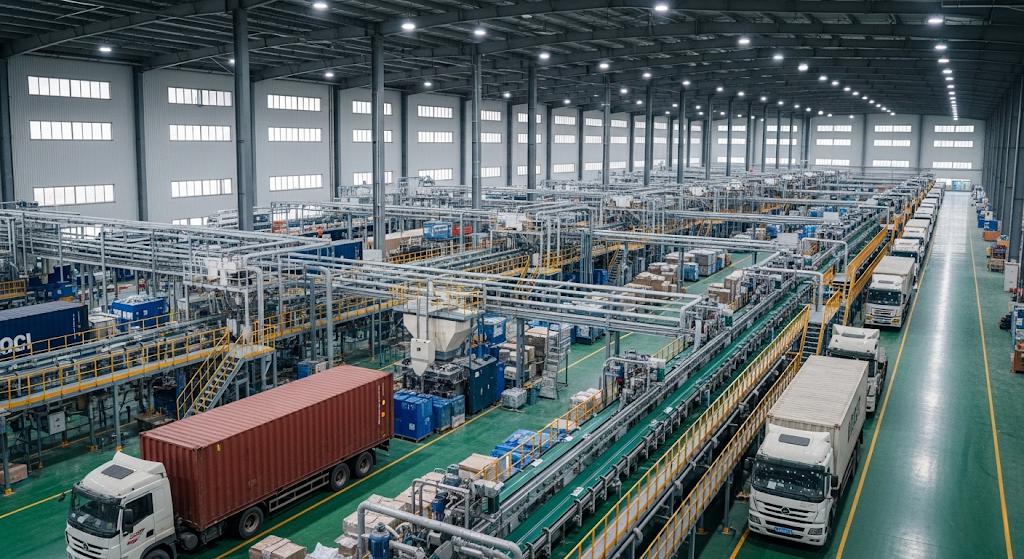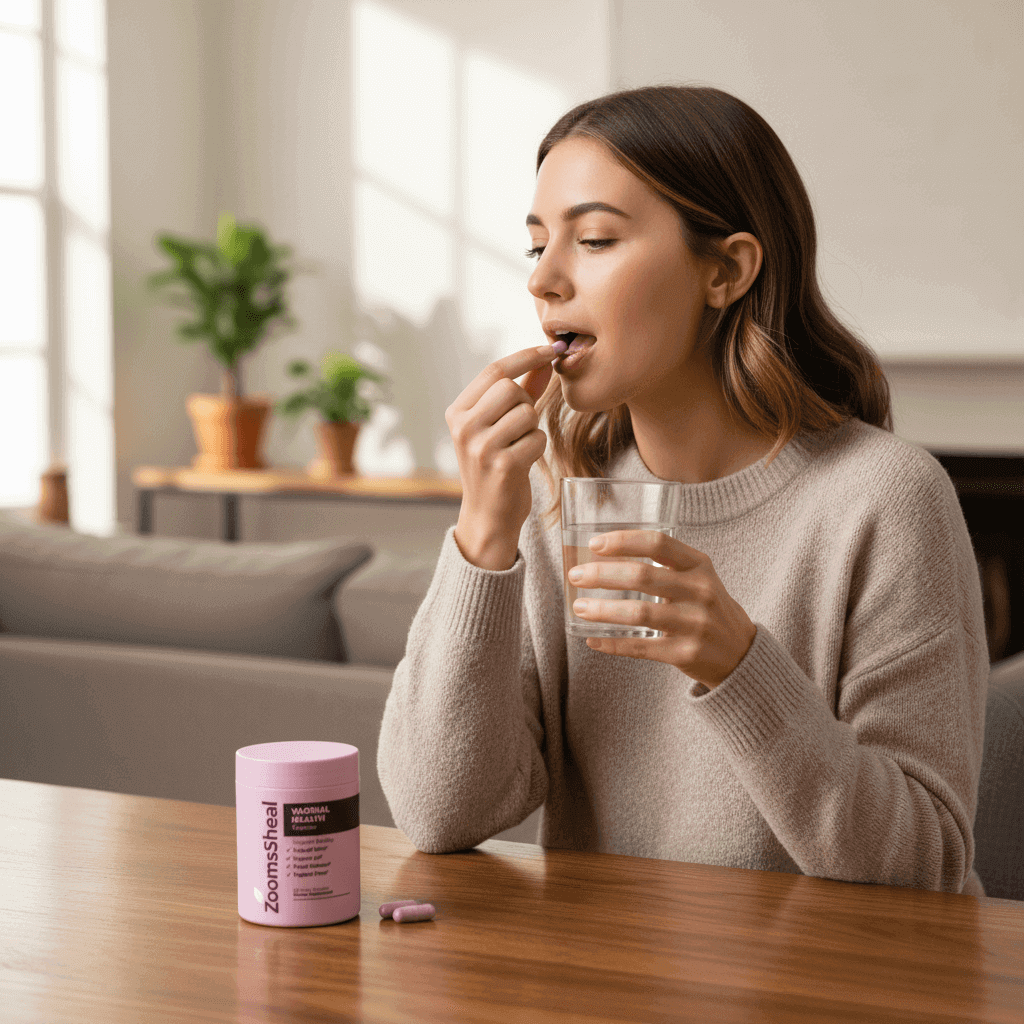As the global demand for dietary supplements continues to surge,contract manufacturinghas emerged as a vital strategy for brands aiming to scale fast without heavy investment in infrastructure. But choosing the right manufacturing region isn’t just about cost—each country brings its own mix of regulations, capabilities, ingredient specialties, and risk profiles.
In this article, we analyze key regions involved inhealth supplement contract manufacturing, providing practical insight for founders, buyers, and sourcing managers making global decisions.
1. United States: Premium Quality, High Compliance

The U.S. market is home to some of the most advanced nutraceutical contract manufacturers, often boasting:
-
FDA-registeredandcGMP-certifiedfacilities
-
Strong focus onquality assurance and third-party testing
-
Capabilities in trending formats likegummies,plant-based capsules, andcustom nootropics
However, U.S. manufacturing comes with:
-
Higher production and labor costs
-
Longer lead times due to high demand
-
Stricter labeling and health claim restrictions (per FDA and FTC)
Best for:Premium-positioned brands selling in North America or EU, seeking top-tier compliance and brand credibility.
2. India: Herbal Specialization and Cost Efficiency
India is a well-established global supplier in the herbal, ayurvedic, and botanical supplement sectors. Notable strengths include:
-
Rich source ofplant-based ingredients(ashwagandha, turmeric, bacopa, etc.)
-
Lower labor and facility costs
-
Increasing number ofWHO-GMPandAyush-certifiedfacilities
Challenges to consider:
-
Variable quality control standards between manufacturers
-
Long-distance shipping & customs can affect shelf-life-sensitive formats
-
Regulatory frameworks differ from Western markets
Best for:Brands entering thebotanical or holistic wellnessspace with budget-conscious sourcing strategies.
3. China: Scale and Ingredient Supply Chain Powerhouse

China’s supplement manufacturing ecosystem is deeply integrated with global supply chains. It offers:
-
Massive ingredient sourcing networks forvitamins, amino acids, minerals
-
High-capacity factories with OEM/ODM flexibility
-
Lower cost per unit for large-scale orders
Watch-outs include:
-
Import regulationsinto Western countries (e.g., EU Novel Food, US FDA compliance)
-
Due diligence required fortesting, certifications, and traceability
-
Language and communication gaps may hinder R&D collaboration
Best for:Large-scale, standardized formulations (e.g., vitamin C tablets, protein powders), especially for eCommerce brands.
4. Southeast Asia: The Emerging OEM Hotspot
Countries likeThailand, Vietnam, and Malaysiaare increasingly attracting global supplement brands for regional contract manufacturing. Highlights:
-
Proximity to APAC markets (China, Singapore, Australia)
-
Improvedpharma-grade infrastructureand multilingual capabilities
-
Support forHalal,KOSHER, and local compliance standards
Still developing in:
-
Scale of innovation compared to U.S. or EU
-
Packaging diversity and niche format capabilities
Best for:Regional expansions in Southeast Asia, brands looking forHalal-compliantorregional language-packagedSKUs.
5. Europe: Regulatory Strength Meets Niche Innovation
Countries likeGermany, Italy, and the Netherlandsrepresent the high-regulation/high-quality end of the supplement manufacturing spectrum. Characteristics include:
-
Deep expertise inprobiotics,gut health, andmedical-grade supplements
-
Strict adherence toEFSA,ISO 22000, andHACCPstandards
-
High consumer trust in European-made health products
However, production costs are generally among the highest globally, andinnovation lead timescan be slower due to regulation.
Best for:Brands prioritizingclinical credibility,EFSA-compliant claims, orpharmaceutical-style positioning.
6. Middle East (UAE, Saudi Arabia): Logistics Gateway + Halal Manufacturing
The UAE and Saudi Arabia are increasingly positioning themselves asmanufacturing and distribution hubsfor the broader MENA region. With:
-
Strong demand forHalal-certifiednutraceuticals
-
Emergingfree zonesand customs advantages
-
Government investments intohealth sector industrialization
Limitations include:
-
Smaller scale compared to Asia/U.S.
-
Still maturing in full-service OEM/ODM offerings
Best for:Brands targeting GCC countries, with a focus oncompliance with religious, cultural, and regional standards.
How to Choose the Right Region for Your Supplement Manufacturing
When evaluating a country for contract manufacturing, consider these factors:
| Criteria | Key Questions |
|---|---|
| Regulatory Compliance | Does the factory meet FDA, EFSA, GMP, or local regulations? |
| Ingredient Specialties | Are your target ingredients local or imported? |
| Lead Times & MOQs | What’s the average turnaround for sampling and production? |
| Cost vs. Quality Balance | Are you seeking premium quality or cost savings? |
| Market Entry Needs | Is local packaging/language support important? |
Choosing a manufacturing base isn’t just a sourcing decision—it’s a brand strategy.
Conclusion: Work With Global-Ready Manufacturers
The contract manufacturing landscape for health supplements is more diverse than ever. Whether you’re seeking herbal sourcing in India, premium probiotics from Germany, or scalable multivitamins in China, understanding each region’s unique strengths can give your brand a significant edge.
ZoomsHealsupports global wellness brands with cross-border OEM/ODM solutions, quality-controlled production, and market-ready formulations. If you’re exploring international manufacturing options, our team can help you bridge the gap between concept and market—compliantly and efficiently.






